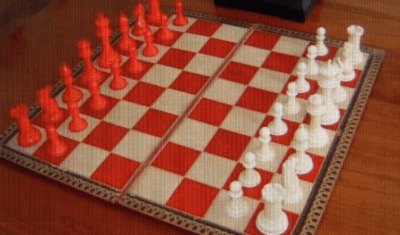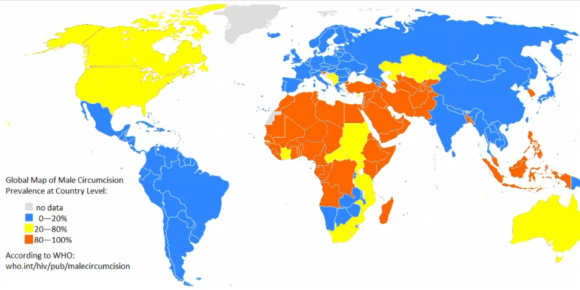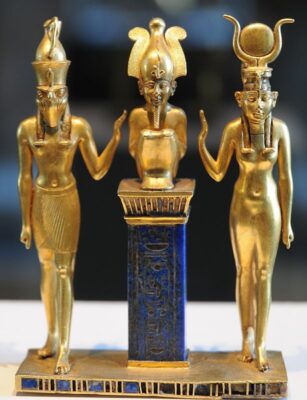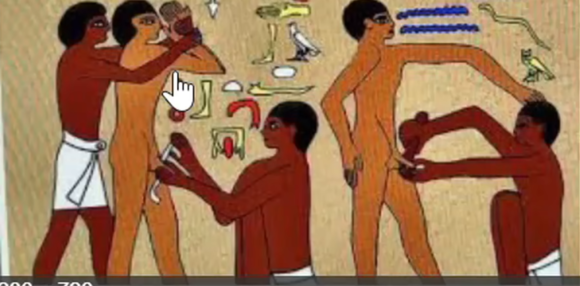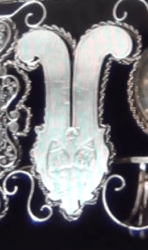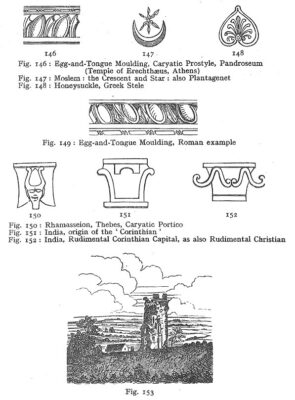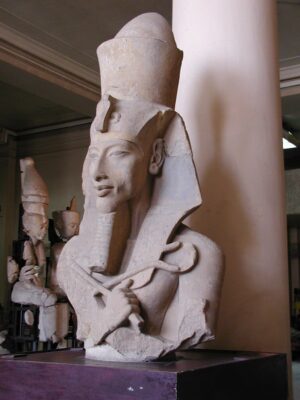
23 July 2019
The Seven Noahide Laws are the Laws of Man, they are best described as Judahite Pharaoh Laws.
The Gospel speaks of these works as the creed of the Synagogue of Satan.
The Noahide are non Biblical and yet the Rabbis claim them to be the laws of Moses. If that is correct, then you would use the ten laws of Moses, yes?
Intrigue, let’s dive in…
Freemasons at the 21st Degree are those chosen and trained to be the Noahide Judges within Christendom. Those who interpret those Laws are to become the judges of Man. Not until you reach the 7th Degree of Masonry are you aware of what Freemasonry actually serves, all below are mere puppets, a front to hide the real agenda of the craft to the public in any nation they are nesting.
The Templars are the military wing in league with Salahadin, the Rabbis are best described as the priesthood. Circumcision is the mark of Pharaohs slaves.
The Phaoronic calendar, which commenced as the new calendar in Egypt in around 4240 BC, hints at cataclysm, of which it is said, shifted the earth from her original orbit which was a yearly 360-day calendar split into 12 months each of 30 days. It is said that the orbit shift created 5 extra days. These extra days are known as the epagomenal days, or in the language of the Egyptian, the five Neters. So we are talking about names given to these five extra days in the religion of Egypt when we speak of : Osiris, Isis, Seth, Nephthys and Horus.
The Syrian (Sothic) fixed year is 365 and ¼ days, the same as we experience today, as it has been since the cataclysm described in old Egyptian. This would give the idea that the earth, since her orbit shift or fall, has aligned herself with the energies of Sirius, or more correctly, the fall aligned the earth to Sirius B (the pup). The heliacal rising of Sirius is 23 July and is the start of the Egyptian calendar, or New Year, also known as the dog days.
Savage invaders enter Egypt (Hyksos first wave), and they assimilate with the Egyptian natives around 2500BC. That means though not Egyptians they would take up the dress and customs of the Egyptians and therefore would be seen as Egyptians. A second wave entered in 1720BC and were described as a savage race and known to take their command from the Phoenician royalty. From this we can deduce that organised from Tyre, huge swathes of Israelites settled in Middle Eastern Egypt and set up their own power base leading to various centuries of rule by the Hyksos in Egypt, from which they launched colonies in many places outside Egypt. This would class everything carried out by the Israelites as actions carried out by the Egyptians, thus the Ritual of Circumcision while appearing to be of Egyptian origin could in fact be a trait of the Israelites who had taken power in Egypt. In 1550 BC the practice would be set up in what is today called Jerusalem by Israelite immigrants under Cadmus.
Ninth Edition Encyclopaedia on Circumcision.[AA]
In 1812 BC Judah took power after the death of Joseph in the Israelite power base in Egypt.
We could consider a similar mechanic having occurred in Britain, first the Hyksos preistcraft and its Judaism followed by the incursion of the preistcraft’s warriors, centuries later, today showing itself as radical Islam which is subverting established Muslim communities across the West into the hands of the Muslim Brotherhood and associated secret sects.
According to Welsh records of 826 the root of the English language is of the Iceni tribe famous for its leader Boudicca who led the revolt against Rome. This presents a schism between historical fact and the scripts born of Oxford and Cambridge on the back of the Jacobite Rebellion.
The Welsh hold records for over 3600 years and claim origin of two migrations, first 1600BC from the sea having origin in Syria, Ur, and a second of Trojan origin from Western Asia Minor around 500 BC. This took place across Britain and Ireland preparing the way for the efforts of Brutus to whom all kings of Britain had to prove blood ties.
It is claimed by the preistcraft that the Imperial Court of the Royal Dragon and Order was formed in Egypt around 2500 to 2200 years BC by the priests of Mendes. They would be the priestcraft controlling the shadow side of creation, always moving to subvert and control by deceiving the existing order.
If we are to seek the initial move to monotheism we must consider Amun-Min who became Amun-Ra and morphed into the chief of the Egyptian pantheon and can be said to be the point at which monotheism began to take form, with all other Gods being manifestations of him, not unlike the Greek Zeus and Olympus. The Persian Artaxerxes I placed the Egyptian God Amun-Min in front of his cartouche on his tomb. Thus presenting that the Persian elites were of the Israelite-Egyptian bloodlines, including King Cyrus.
The original checker board was white and red, not the Masonic black and white, and symbolised the two Houses of Egypt, lower and upper Egypt. This was symbolised in the change of crown worn by Pharaoh, they conjoined the two into one crown called the Pschent. (See below images.)
Let me take your mind back to a time before Christ, but coming after the formation of the dragon order to the land called Egypt and a Pharaoh who has been named a heretic by his contemporaries who lived through his heresy, as he built a Temple to a Sun God called Aten. We are speaking of the God king Akhenaton who would set up a monotheistic rival to the God Amun-ra with a Sun cult that worshipped the Aten. In the consideration of language it can be said that the priesthood of the Aten have superimposed itself over the present day rites accorded to the followers of Amun-Ra.
Akhenaten ækəˈnɑːtən; also spelled Echnaton, Akhenaton, Ikhnaton, and Khuenaten; meaning Effective for Aten, was known before the fifth year of his reign as Amenhotep IV, in the Greek form, Amenophis IV, which means “Amun Is Satisfied”, was an Egyptian pharaoh of the 18th Dynasty who ruled for 17 years and died around 1336 or 1334 BC.
He is known for abandoning traditional Egyptian polytheism and introducing worship centred on the Aten, which is sometimes described as monolatristic, henotheistic, or even quasi-monotheistic. An early inscription likens the Aten to the sun as compared to stars, and later official language avoids calling the Aten a god, giving the solar deity a status above mere gods. If we take into consideration the tale of Shemsu Hor, the question arises : did Akhenaton have in his possession the original post flood hidden treasure kept within the pyramids?
From the above image we can see that the main areas in which the practice of circumcision is found, as the image clearly shows the ritual emanates from the Middle East and North Africa. Ethiopia claims the origin of the ritual but not in the manner in which babies are circumcised today.
The Ethiopian national epic, Kebra Nagast (‘Glory of Kings’), records the tradition that Solomon and the Queen of Sheba have a son, Menelik, who comes to Ethiopia to found the royal dynasty. This presents a connection to Solomon and Egypt which we will explore later.
Sheba, now known as Saba, is at the narrow mouth of the Red Sea, only twenty-five miles from the coast of Africa. From about the 10th century BC Sabaeans migrate in increasing numbers across this strait. By perhaps the 5th century they are sufficiently numerous and powerful to establish Ethiopia’s first civilisation — the Semitic kingdom of Aksum.
There is a disparity about the year Moses was born, Jerome gives 1592 BC, and James Ussher 1571 BC as Moses’ birth year but according to Sigmund Freud, Akhenaten was the pioneer of a monotheistic religion that later became Judaism. In his book Moses and Monotheism Freud argued that Moses had been an Atenist priest who was forced to leave Egypt with his followers after Akhenaten’s death and took over Judea. Freud argued that Akhenaten was striving to promote monotheism, something which Moses was able to achieve.[1] For this to hold true we would have to assume chronology has been altered to disassociate the two characters.
Control of chronology is perhaps one of the most important weapons the priestcraft have in piecing together history to sanctify their current position, Isaac Newton recognised this fact when he was commissioned to offer a historical chronology by the Queen.
There is a train of research that suggests that the Ten Commandments were in fact the laws laid out by Akhenaton for his slaves, via Moses, for no other reason than to prevent the slaves from rising against his power, and given Akhenaton declared himself the son of Aten, all he created would be declared to be the laws handed down by God. In essence, the tradition of the Rabbis or Pharaoh’s priesthood, is a tale about shifting all religion away from God the father to God the Pharaoh. The Seven Noahide Laws are this fake system and yet the Rabbis insist they are the laws of Moses but coming from an earlier character, Noah. Ten and seven are not the same number, this is a fact, yet the sneaky Rabbis, through their self made gematria, demand you ignore fact and function only within the fiction they write.
We must also consider that the cult of Mithra, (Zoroastrianism) claimed to be a Persian creation, was in fact another branch and priesthood of the Egyptian cult of Aten, which would spread across the East and into China.
Robert Feather presents Solomon’s Temple as being the Temple constructed by Akhenaton in Egypt and not as the Jews describe it as being built in Palestine. He claims that a careful examination of the geometry of the Temple and city described in Ezekiel 40–48 demonstrates without any doubt, that we are looking at the Great Temple of Akhetaton and the huge virgin city built for Pharaoh Akhenaton to be seen as his holy city dedicated to the Aten. There is also a claim that the Dead Sea Scrolls were originally found in Egypt and then rehashed by the rabbis and presented to Man through some very dubious people indeed many centuries later, with the sole aim of cementing the idea that the Temple was indeed originally in Palestine, leading to the current falsehood that is, the construction of the Third Temple under Donald Trump who has been cited by Chabad Lubavitch as King Cyrus.
Self confessed Satanist (Shatan, Egyptian horned viper) Michael Aquino, in a ritual, invoked the Prince of Darkness with the use of the name Satan, but the Prince answered Aquino by the name of Set. From this invocation, Aquino transcribed what he had learned from the invocation in a book titled, The Book of Coming Forth by Night, a document that he claimed to have been inspired by the Prince Himself during the ritual, but that the entity he brought forth instructed Aquino that he was Satan but in the form of Set.
Set murdered his brother Osiris and mutilated his body into 13 parts, Isis gathered up all the parts with the exception of the phallus or penis. To reference that the new royalty and the priesthood were born of Set, they were circumcised. According to scientists that X rayed Egyptian mummies claim the royalty were also circumcised. Egypt is the source of the earliest definitive reference to the practice, from 2400 BCE which you can see in the below image.
Set demanded that all the slaves be circumcised, marked, which is a ritual afforded to Set which gives Set complete control of the seed of the slave and thus all he will create, a hex that will pass down from father to son through the generations. Originally this was carried out when a slave was captured, so not necessarily carried out upon a child, but as sons were born to the slaves the ritual would be carried out when the baby was born, in Judaism this is usually on the eighth day.
Obelisks are important in Egyptian theology and many have been moved to centres of power in many nations to represent that Set rules here through penetration. London is no exception to this rule.[3]
If you look at the first image above we find left to right, Horus, Osiris and Isis, take note of the headdress of Osiris and take a look at the following images : [Click to enlarge]
The implements in the above images are the tools for circumcision, if you compare the image on the right with the headdress adorned by Osiris, you can recognise the symbolism and why the elites have an obsession with the phallus which they present in the form of the obelisk to signify they have penetrated the womb of the nation.
When you are a child you are at the absolute mercy of your mother and father as both were to theirs, your grandparents, this goes back to the origin of the rituals carried out which of course with circumcision, has its origin in the marking of the Egyptian slaves. The Ethiopians also circumcised boys but they carried this out by cutting a slit which over time allowed for the foreskin to pull back as opposed to the Jewish pulling foreskin over the head and cutting and then biting and sucking the blood by a Rabbi.
Judaism
Jewish babies usually on the eight day after birth, are ritually circumcised as commanded by Moses on behalf of the Pharaoh… This in and of itself suggests Moses to be an Egyptian priest, or, even perhaps Akhenaton himself. Jews administer finance and today they also control the media as it directs the false program into the Christian west. As such we can see the role the Jews have played for Pharaoh since Moses led them to new lands to set up financial systems based in usury. The Hebrews were commanded to assimilate but with the rise of the Ashkenazi the alternative and Talmudic command to remain separate based in the fact, they are to see themselves as superior, has taken over the entire tradition.
The messiah will be of the line of David from father to son, son after son as distinct to the usual determination of a Jew through the mother. It is from this line that a prince will command, not a king… a prince.
This presents a division between two theologies because it has been shown through genetic research that modern day Ashkenazi are born of Jewish men and the enslaved european women who upon release to freedom, would marry the master and become Jews. King David is a son of Ruth the converted.
Islam
The Koran does not divide Islam into two the two houses of peace and war, the division is born of the Hadith and Sira, from which is born the Sharia Law. That means the Sharia in its current form is not a system born of the Koran but from the Imam’s misrepresenting the Koran to the Muslim. If the Sharia is wrong then they submit to something other than the Koran, you are not Muslim.
The crescent moon and star is a Plantagenet badge, the term Plantagenet comes from the children born with the sack on their head, they holds important occult significance. It is also the Badge of the Sultan of Turkey, with a difference as it displays the insignia of Egypt.
The flag of Egypt is the ensign of the sect of Ali (the second Mohammedan head of religion), which is ‘Mars, a Crescent, Luna; within the horns of which is displayed an estoile of the second’–abandoning the vert, or green, of the ‘Hadgi’, or of Mecca, the site of the apotheosis of Mohammed. The Mohammedan believers of the sect of Ali rely on the ‘masculine principle’–more closely, in this respect, assimilating with the Jews; and therefore their distinctive heraldic and theological colour is red, which is male, to the exclusion of the other Mohammedan colour, green, which is female. The ‘Hadgi’, or Pilgrims to Mecca, wear green; the Turkish Mussulmans wear red and green, according to their various titles of honour, and to their various ranks.
It would therefore be my contention that through the Hadith and the Sira, Islam recognises a division but this is not born of the Koran, it is born of the Imams who are purposefully misleading Muslims that the division is ordained by the Koran. That the pact made by the Templars and Salah ha -in (Jusuf Ibn Ajub) reflect a contract of brotherhood from this false division.
According to Sufi Master and historian Sayed Idries el-sashimi (1924-1996AD) known as Idries Shah, the Al-Banna Sufis from Egypt helped the founding Templars to understand and master their archeological findings from the Temple of Solomon, teaching and training the first Knights Templar during their formative nine years of excavations. The Egyptian Al-Banna order provided key knowledge of the ancient origins of Christianity, saying, “you may have the cross, but we have the meaning of the cross.”
The Egyptian mystery school masters of the Muslim (Sunni) Sufi Hashashin Order (Assassins) provided additional training over the years, for restoration of the ancient priesthood which the Templars recovered from the Temple of Solomon. Their Arabian Magi (ascended master) Grand Master Rashid Al-Din Sinan (1132-1192AD) came to be affectionately known as the Old Man of the Mountains.
Having experienced the mystery school for the seven year rite during the 1990s, I can tell you in all sincerity, that the entire mystery school theology is ever moving you under the idea of ascended masters, from this study I have yet to be relieved of the idea that something other than from within the Hebrew tradition, has held it within its grasp since the fall of Rome, moving ever to that endeavour since the takeover of the terrorist group that was the House of Judah in 435BC. Basically it is all complete bollocks.
The Magi are in control of the preistcraft.
The Muslim Shi’ite Sufi Isma’ili Order also made many significant contributions to the infrastructure and institutional organisation of the Knights Templar as a Chivalric Order. See :
Idries Shaw, The Sufis, The Octagon Press, London (1964), 2nd Edition (1983).
Edith Miller, Occult Theocracy, Hawthorne, California, The Christian Book Club of America (1993), p.143.
Edward Burman, The Assassins – Holy Killers of Islam, Crucible Press (1987).
Crusades
Imagine you were to grab this cross at its centre and then slowly lift it up, you have a pyramid.
Something happened during the Crusades from which a new Templar was born, we can call this the Kabbalah Templar made under instruction of the real treasure found within the Giza pyramid and the building of a realm we would better understand as the Mystical Body of Satan. This could well be the treasure left by Akhenaton. In that sense what the new Templar became was a phaoronic military order from which a pact with Salahadin would unite the bloodlines of the Pharaohs, the Templars and the Kurdish Sunni Muslims with the code of silence as the absolute maxim, ergo, thus began the network of secrecy passing down from the elect and into the minds of the warrior slaves of Pharaoh. From that point on this trio of murdering psychopaths would lay siege against Europe.
Pharaoh and his circumcised slaves move en masse into Europe under the guise of Crusade in the opposite direction.[A]
The phaoronic bloodlines and aristocracy would head for the Alps, hence all the high castles, from which mercenaries would be sent across Europe to muster discontent and division, the essential ingredient when your aim is to subdue tribes and nations with credit and debt. Once division is turned to physical combat, the Phaoronic royalty would procure mercenaries for the real fighting, requiring of the actual forces involved in the dispute only in the role of logistics, but for the all important historical record, both combative sides would bare the sin of it all as a proxy. Once the Mercenaries take root in your conflict and the deed is done, many would remain to form the shadowy and ruthless secret society networks, thus begins the path to subversion of each respective side in the war.
If you contemplate the fact that since 911, the greatest achievement outside of finance and plunder has been to secure a huge and multinational private force of Mercenaries, made up of each nations finest warriors, who will no longer be in their respective country when the real game becomes obvious to all. Blackwater, under Eric Prince is perhaps one of the largest international Templar military machines created out of the phoney wars on the back of the symbolic event that heralded the end of world trade as we enter monopoly.[1]
If we take England as an example of Christianity before the 1066 invasion we find that Germanic methods of nation building was the backdrop to English Christianity. King Alfred as a boy was sent to Rome to meet with the Pope, who declared Alfred a future king. Clearly under the Germanic system English Christianity had close ties with Rome.
From around 909AD, the Carolingian warriors took over the great Abbey at Cluny and within the next century and a half became the Monastic order in Europe. We know this because the Abby at Cluny was the only monastery that had kept the records that were not destroyed in the European wars that would follow as the feudal system was expanded.[2]
The main change they made, from which all else followed, was to reverse the Benedictine doctrine on land and property ownership, which had been that the Church hold all land and property donated to the Church was to be held in common, this means all that came within the original Church portfolio was to ensure everything remained available to society as formed in the social structure. The reversal of this maxim opened the door to the feudal system administered by the Monasteries who now owned the land. With the rise of Dunstan, England began to feel the shift in Monastic theology being carried out in Burgundy, his policy had two sides :
He used his secular powers to enforce his religious views, and everywhere he and his friends began reforming the monasteries by forcing them to adopt the new Benedictine rule. They expelled the secular canons, many of whom were married men, from the cathedrals, and replaced them with monks who had no wives to grass them up. They also dealt severely with the custom of lay persons receiving church preferment, one of the commonest abuses of the time.
We must also take into account the Byzantine connection under Basil II (Switzerland symbolism) who used the Viking Varangian Guard to weaken the Anglo-Saxon power in England when they attacked Harold Godwinson, allowing the 1066 invasion to be the success it was.
We can therefore see clearly that a change in Christianity, by definition of a warrior class becoming the hierarchy, was well underway in the 10th century.
This change in theological doctrine can be seen in England with the arrival of Dunstan and the enthronement of the Danish puppet Cnut.
Clearly, Christianity pre 909 was not the Christianity we have known since 1066.
Notes
[AA] ENCYCLOPAEDIA BRITANNICA, NINTH EDITION, New York: Charles Scribner’s Sons, 1876
[This is the first edition coming after the zionist financiers purchased what was a Scottish formulated encyclopaedia.]
[CIRP Note : This file contains the entry for “Circumcision” from the ninth edition of the Encyclopædia Britannica, which was published in 1876. The author is the Reverend T. K. Cheyne of Balliol College, Oxford. The text is found in the Fifth Volume, pages 789-791.]
CIRCUMCISION. The importance of this rite is so largely due to its quasi-sacramental character in Judaism, that any inquiry into its history and meaning must be prefaced by a reference to the Old Testament.
I. There are three distinct narratives in the sacred literature of the Jews which claim to be considered. It is related in Gen. xvii. that when Abram the Hebrew was ninety-nine years of age, he became a party on behalf of himself and his descendants to a covenant with his God. Of this covenant the sign and condition was circumcision, which was directed to be performed (a peculiarity of Judaism) on the eighth day after the child’s birth. Is this account, we may ask, based on a historical tradition ? If so, the circumcision of the Israelites is entirely unconnected with that of other nations unless indeed other nations have borrowed theirs from the Israelites. This has actually been maintained in the case of the Egyptians by Archdeacon Hardwicke, but the theory is not only improbable in itself, considering the imitative character of the Israelites, and their low importance in Egypt (Gen. xlvi. 34), but contrary to the evidence of the Egyptian monuments (see below). If, as has been supposed by some, the document to which Gen. xvii. belongs is of post-captivity origin, this would put it out of court as a witness to the popular tradition of the Hebrews. But there is another narrative, apparently of a more archaic complexion, which leads to a directly opposite historical result. We read in Exod. iv. 25, 26, that when Moses was returning from Midian to Egypt, he was in danger of his life owing to the neglect of circumcision in his family. “And Zipporah,” his Midianitish wife, “took a sharp stone, and cut off the foreskin of her son, and cast it at his feet, and said, Sure a khatan (Auth. Vers., ‘husband’) of blood art thou to me ; so he (sc., the offended deity) desisted from him. At that time she said, a khathan of blood with reference to the circumcision.” The meaning of the story can still be discerned. Khathan, or khatan, meant originally not “husband” (as Auth. Vers. of Exodus), nor “son-in-law” (as in ordinary Arabic), but a “a newly-admitted member of the family.” This appears from the sense of Arab. khatana “to provide a wedding-feast,” and khatana, “to give or receive a daughter in marriage.” So that in the sense of the old Hebrew tradition, “a khathan of blood meant “one who has become a khathan, not by marriage but by circumcision,” a meaning which is still further confirmed by the derived sense of Arab. khatana “to circumcise,” circumcision being performed in Arabia at the age of puberty. To sum up:—an Arabian woman plays the chief part in the story, and her words are only explicable from the Arabic ; it is far from improbable that Yahweh (or Jehovah) was himself first made known to the Jews in Arabia (comp. Judg. v. 4, Hab. iii. 3) ; putting all which together, we obtain a strong case for the hypothesis of the Arabian origin of Jewish circumcision.
The third narrative is Josh. v. 2-9, where Joshua is said to have circumcised the children of Israel a second time with “ knives of stone,” and have thus “rolled away the reproach of Egypt from them.” It is not unnatural that this should have been used by some to confirm the view of an Egyptian origin of circumcision, among others by Dr Ebers, whe refers to the additional words in the Septuagint, Josh. xxiv. 31, “ There they buried with him. . . . . the stone knives with which he had circumcised the children of Israel in Gilgal.” But, first, with regard to his singular statement of the Alexandrine version, it must henceforth be abandoned by all scholars. It is simply an unscientific attempt to account for the existence near Joshua’s supposed tomb of flint instruments, such as those discovered by M. Guérin on this very site. It need hardly be added that the flint instruments discovered by the French savant were really pre-historic ; they consist not only of knives, but of saws, which would have been available for the purpose ascribed to Joshua (see Burton and Drake’s Unexplored Syria, ii, 295-300). And, secondly, Bishop Colenso has shown some reason for the suspicion that verses 2 to 8 (not verse 9) are later additions to the narrative, in which case the “ reproach of Egypt” means, not the state of uncircumcision, but the contempt of the Egyptians so forcibly expressed in Exod. xxxii. 12, Num. Xiv. 13-16. As for the “ knives of stone ” (comp. Josh. xxiv. 31, Sept.), on which Ebers has laid some stress, such implements are not distinctively Egyptian, if they were even employed at all by the Egyptians for the purpose of circumcision. It is true that Herodotus (ii. 104, comp. Diod. Sic., i. 28) asserts the Egyptian origin of circumcision to have been admitted in Palestine, but he is probably right on so far as the Phœnicians or Canaanites are concerned.
II. We may now proceed to consider circumcision from an ethnographical point of view. It was not a specially Semitic rite, being only known to the southern and western Semites, who probably derived it directly or indirectly from the Egyptians, if not from some entirely non-Semitic source. Though not referred to in the Koran, it was a primitive Arabian custom to circumcise youths at their entrance on puberty (i.e., between their tenth and fifteenth year), as appears not only from Gen. xvii. 25, Jos. Antiq., i. 12, 2, but from the express statement of Ibn-al-Athir (quoted by Pococke, Specimen Hist. Arabum, p. 319), which is confirmed by a remarkable passage in the life of the old Arabian poet Dhû-l-isba (Zeitschr. F. d. Kunde des Morgenlandes, iii. 230). From Arabia it was carried by the preachers of Islam to Persia, India, and Turkey ; from Arabia, too, as we have seen, it probably came in remote times to the Israelites. The circumcision of the Phœnicians or Canaanites has been disputed, but is attested by Herodotus (ii. 104), and is confirmed by the story in Gen. xxxiv., as also by the fact that the term of contempt, “the uncircumcised,” is reserved in the Old Testament for the Philistines. The rite seem, however, to have fallen into disuse in later times in Phœnicia as well as in Egypt ( Dr Ebers refers to the uncircumcised figures on the stele of Pianchi, comp. also Herod. L. c., Jos. Antiq., viii. 10, 3, Contr. Ap. i. 22, and perhaps Ezek, xxxii. 24, 30), which may partly account for its being afterwards regarded as distinctive of the Jews. The Egyptians, too, were circumcised, and that prior to the immigration of the Hebrews (Wilkinson), as appears from the representations on the very earliest monuments. The most striking of these is the sceneon a bas-relief discovered in the temple of Chunsu at Karnak, a drawing of which is given by M. Chabas and Dr. Ebers. Their age, says Dr Ebers, must be between six and ten, which agrees with the present custom in Egypt, where, as Mr Lane tells us, circumcision is generally performed in the fifth or sixth year, though often postponed by peasants to the twelfth, thirteenth, or even fourteenth year (Modern Egyptians, i. 71). It has often been asserted that only the priests underwent the operation, but there is no earlier evidence for this than that of Origen (ed. Lommatzsch, iv. 138), in whose time it is quite possible that the Egyptians, like the later Jews, sought to evade a peculiarity which exposed them to ridicule and contempt.
But the rite of circumcision is known among nations which cannot be suspected of communication with Egypt. Similar causes produce similar effects all the world over. It was in use in some form among the ancient civilised peoples of Central America, though this is better attested of the Nahua branch (including the Aztecs) than of the Maya (Bancroft, Native Races, vol. iii.) It is still kept up among the Teamas and Manaos on the Amazon ; also among three different races in the South Seas, among most of the tribes of Australia, among the Papuans, the New Caledonians, and the inhabitants of the New Hebrides. It is widely spread in Africa, especially among the Kaffir tribes. Among the Bechuanas the boys who are circumcised form a sort of society, for which among other reasons, Waltz conjectures that the Bechuanas communicated the rite to the other Kaffirs. Prichard (Physical History of Mankind, ii. 287) rightly dismisses the idea that the Kaffirs borrowed the rite from Mahometan nations, though the progress of Islam will help to account for its prevalence in other parts of Africa.
III. Very different views were held in antiquity as to the meaning of the rite of circumcision. There was a myth common to Egypt and Phœnicia, though not of very ancient date in its extant Egyptian form, which seems to bring circumcision into connection with the Sun-god. In the Book of the Dead, chap. Xvii., we read of the “ blood which proceeded from the limb of the god Ra, when he wished to cut himself,” which the late Vicomte de Rougé interpreted, with much plausibility, of circumcision (Revue archéologique, nouveau série, i. 244). And in a fragment of the Philonian Sanchoniathon (Fragmenta Historicorum Grœcorum, ed. Müller, iii, 568, 569), we find a similar tale of El circumcising his father Uranos, or, according to another version, himself, and the blood flowing into the springs and rivers. Space forbids us to discuss the bearings of this myth. Herodotus (ii. 37) ascribes the Egyptian custom to the motive of cleanliness (καθαριοτητος εινεκα) This is also one of the four causes reported on the authority of tradition by Philo the Jew (Opera, ed. Mangey, ii. 210), the three others being avoidance of carbuncle, the symbolising of purity of heart, and the attainment of numerous offspring. Mere cleanliness, however, seems hardly an adequate motive for the practice. Sanitary reasons seem much more probable, judging from the well-ascertained physical advantages of circumcision to the Jewish race. But even this is not a complete explanation. Why was the practice adopted by some nations and not others ? The most scientific theory is that which refers it to a religious instinct common to all nations, though not always expressing itself in the same way, and this seems to be at least obscurely indicated by the tradition of the Israelites. The prophet Jeremiah (ix. 25,26), too puts it in the same class with cutting off of the hair (comp. Herod. iii. 8), which, like other bodily mutilations, has been shown to be of the nature of a representative sacrifice (Tylor’s Primitive Culture, ii. 363, 364). The principle of substitution was familiar to all ancient nations, and not least to the Israelites. Witness the story of Gen. xxii., the pascal lamb, and the redemption of the first-born by an offering (Exod. xiii. 11-16), and compare the similar phrase ascribed to Saul in 1 Sam. xviii. 25. On this principle circumcision was an economical recognition of the divine ownership of human life, a part of the body being sacrificed to preserve the remainder. But it was more than this ; otherwise it would scarcely have asserted its claim to existence among the Jews, when all other mutilations were strictly forbidden as heathenish (Lev. xix. 27, xxi. 25). It can scarcely be doubted that it was a sacrifice to the awful power upon whom the fruit of the womb depended, and having once fixed itself in the minds of the people, neither priest nor prophet could eradicate it. All that these could do was to spiritualise it into a symbol of devotion to a high religious ideal (comp. Jer. iv. 4 ; Deut. x. 16 ; Jer. ix. 25).
In conclusion, we must briefly refer to an analogous rite, of which women are in many countries the subjects. It is said to consist in mutilation of the clitoris, which is sometimes connected with the degrading practice of infibulation. It was prevalent at the time of Strabo (pp. 771, 824) in Arabia and in Egypt, and, as Mr Lane attests, is still native to those regions (Modern Egyptians, i. 73, Arabic Lexicon, s.v. “hafada”). Carsten Niebuhr heard that it was practised on both shores of the Persian Gulf, and at Baghdad (Description de l’Arabie, p. 70). It appears in some parts of West Africa, e.g., Dahomey, but it is said to be still more common in the eastern part of that continent.
See F. C. Baur, Tübinger Zeitshrift, 1832, Heft 1 ; Ewald, Antiquities of Israel, Eng. Trans., pp. 89-97 ; Büdinger, “ Egyptische Einwirkungen auf Hebraïsche Culte,” in Berichte of Vienna Academy ; Sir Gardiner Wilkinson, Ancient Egypt, vol. V. p. 318 ; Chabas, Revue archéologique, n. s., vol. iii. pp. 298-300 ; Ebers, Egypten und der Bücher Mosis, vol. i. pp. 278-284; G. Grey, Travels in Australia, vol. ii, p. 343 ; Waitz, Anthropologie der Naturvölker, vol. ii. pp. 111, 390 ; Peschel, Völkerkunde ; Burton, “ Note connected with the Dahomans,” in Memoirs of the Anthropological Society,” 1863-64. (T. K. C.)
(File revised 4 October 2005)
[A] Rosicrucian Gnostic Interconnection.
THE branch sect of the Gnostics, called Basilideans, who were properly Ophites, arose in the second century, deriving their name from Basilides, the chief of the Egyptian Gnostics. They taught that in the beginning there were Seven Being’s, or Æons, of a most excellent nature; in whom we recognize the cabalistic Seven Spirits before the Throne. Two of these first Æons, called Dyamis and Sophia–that is ‘Power’ and ‘Wisdom’–engendered the, angels of the highest order. The name of Abraxas; the Deity of the Gnostics, is made up of ‘the numerical letters representing the total 365–the aggregate of days of the solar year. The ‘manifestation’ of Abraxas rests in his Son, Nūs (knowledge), or Christ, the chief of the Æons, who descended to earth and assumed the form of ‘Man’; was baptized, and crucified in appearance (Mosheim’s Eccles. Hist. vol. i. pp. 181-4). The Manichæans, who deny the reality of the Crucifixion of the Son of God, and whose tenets concerning the Saviour Jesus are peculiar, derive their name from Manes, or Mani; and their doctrine was first disseminated in Persia about the year 270. They speak mysteriously of the Anima Mundi, or ‘Hyle’; they call this principle a deity, and agree with the Rosicrucians in asserting that it is a power presenting itself at once in reverse to the world and to the heavens, in as far as that, while it is dark to the one, it is light to the other; and contrariwise. The Gnostic hierarchy consisted of an arch-priest or patriarch, twelve. masters, and seventy-two leaders or bishops. The Gnostics called Matter, or Body, ‘evil’, and ‘darkness’, and seemed uncertain whether, in its operations, it were active or passive. It was believed by these sectaries that there were successive emanations of intelligent beings–these were the Æons (αἰῶνες), producing the various phases in creation. In this way, there arose in time a mighty being, the Demiurge, who set to work on the inert matter then existing, and out of it formed the world. The reconcilement, or restoration, is to the Bhuddistic pleroma, or fullness of light. It is absorption into ‘annihilation’, or into victory, oblivious of the vexations of ‘life’. Here, in this fullness of light–or independence of all worlds, or of life, according to Man’s ideas–the Supreme God has His habitation: but it is not ‘nothingness’, according to our ideas of nothing; it is so only because it has not anything in it comprehensible. The Alexandrian Gnostics inclined to the opinion that Matter was inert, or passive; the Syrian, Gnostics, on the contrary, held that it was active. Valentinus came from Alexandria to Rome about A.D. 140. St. Augustine fell under the Gnostic influence, and retained their beliefs from his twentieth to his twenty-ninth year–viz., from 374 to 383 A.D. Their books have for titles: the Mysteries, the Chapters or Heads, the Gospel, and the Treasure. Refer to Beausobre, Walch, Fuësslin, and Hahn.
The Gnostics held that Christ’s teaching was not fully understood even by His disciples; and therefore He promised to send, in due time, a still greater Apostle, the Paraclete, who should effectually separate truth from falsehood. This Paraclete appeared in Mani.
The West Front of Lichfield Cathedral displays accurately the mythic idea of the union of the Male and Female Principles in the parallel double towers, which are uniform.
The claims for the real reading of the Egyptian hieroglyphics are distinct and unhesitating, as put forward by the Egyptologists; who, if industry could have succeeded, certainly would have realized their desire. But it is extremely doubtful whether, after all, they are not very widely astray. The late Sir George Cornewall Lewis, in his History of Ancient Astronomy, has disposed conclusively of the assumed correctness of most of these interpretations. The Egyptologists, the principal of whom are Champollion, Rawlinson, Dean, Milman, Sir George Lewis (perhaps the best critic), Professor Wilson, Sir Gardner Wilkinson, Dr. Cureton, Dr. Hincks, M. Oppert, Mr. Fox Talbot, with a large amount of ingenious and very plausible research and conjecture, have not truly touched or appreciated these enigmas. They yet remain, baffling the curiosity of the moderns; and they are likely to preserve their real mysteries unread as long as the stones of the Pyramids and the remembrance of the Sphinx–if not her visible figure–themselves endure. We believe that there is no adequate mystical comprehension among modern decipherers to read the hopeless secrets–purposely evading discovery–which lie locked in the hieroglyphics: the most successful readings are probably guesses only, founded on readily accepted likeness and likeliness.
The Temple Church, London, presents many mythic figures which have a Rosicrucian expression. In the spandrels of the arches of the long church, besides the ‘Beauséant’, which is repeated in many places, there are the armorial figures following: ‘Argent, on a cross gules, the Agnus Dei, or Paschal Lamb, or’; ‘Gules, the Agnus Dei, displaying over the right shoulder the standard of the Temple; or, a banner, triple cloven, bearing a cross gules’; ‘Azure, a cross prolonged, potent, issuant out of the crescent moon argent, horns upwards; on either side of the cross, a star or’. This latter figure signifies the Virgin Mary, and displays the cross as rising like the pole, or mast of a ship (argha), out of the midst of the crescent moon, or navis biprora, curved at both ends; ‘azure, semée of estoiles, or’. The staff of the Grand Master of the Templars displayed a curved cross of four splays, or blades, red upon white. The eight-pointed red Bhuddist cross was also one of the Templar ensigns. The temple arches abound with brandished estoiles, or stars, with wavy or crooked flames. The altar at the east end of the Temple Church has a cross flourie, with lower limb prolonged or, on a field of estoiles, wavy; to the right is the Decalogue, surmounted by the initials, Α. Ω. (Alpha and Omega); on the left are the monograms of the Saviour, Ι C∙Χ C; beneath, is the Lord’s Prayer. The whole altar displays feminine colours and emblems, the Temple Church being dedicated to the Virgin Maria. The winged horse, or Pegasus, argent, in a field gules, is a badge of the Templars. The tombs of the Templars, disposed around the circular church in London, are of that early Norman shape called dos d’âne; their tops are triangular; the ridge-moulding passes through the temples and out of the mouth of a mask at the upper end, and issues out of the horned skull, apparently, of some purposely trodden creature. The head at the top is shown in the ‘honour-point’ of the cover of the tomb. There is an amount of unsuspected meaning in every curve of these Templar tombs; but it would at present too much occupy us to more fully explain.
[1] Compagnie des Indes was a French Templar company that held a monopoly over the West African slave trade, one-third ownership (31%) of the company was held by banks, Berne’s bank Marcuard and bank leu housed in Switzerland.
The French East India Company (French: Compagnie française pour le commerce des Indes orientales) was a commercial Imperial enterprise, founded in 1664 to compete with the English (later British) and Dutch East India companies in the East Indies.
Planned by Jean-Baptiste Colbert, it was chartered by King Louis XIV for the purpose of trading in the Eastern Hemisphere. It resulted from the fusion of three earlier companies, the 1660 Compagnie de Chine, the Compagnie d’Orient and Compagnie de Madagascar. The first Director General for the Company was François de la Faye, who was adjoined by two Directors belonging to the two most successful trading organisations at that time: François Caron, who had spent 30 years working for the Dutch East India Company, including more than 20 years in Japan, and Marcara Avanchintz, an Armenian trader from Isfahan, Persia. avanchintz source : McCabe, p.104.
[2] Sword Miter and Cloister, Nobility and the Church in Burgundy, 980-1198, Constance Brittain Bouchard.
[3]There are ancient Egyptian obelisks in the following locations :
- Egypt – 8
- Pharaoh Thutmosis I, Karnak Temple, Luxor
- Pharaoh Ramses II, Luxor Temple
- Pharaoh Hatshepsut, Karnak Temple, Luxor
- Pharaoh Senusret I, Al-Masalla area of Al-Matariyyah district in Heliopolis, Cairo
- Pharaoh Ramses III, Luxor Museum
- Pharaoh Ramses II, Gezira Island, Cairo, 20.4 m (67 ft)[21]
- Pharaoh Ramses II, Cairo International Airport, 16.97 m (55.7 ft)
- Pharaoh Seti II, Karnak Temple, Luxor, 7 m (23 ft)
- France – 1
- Pharaoh Ramses II, Luxor Obelisk, in Place de la Concorde, Paris[20]
- Israel – 1
- Italy – 13 (includes the only one located in the Vatican City)
- Rome — 8 ancient Egyptian obelisks (see List of obelisks in Rome)
- Piazza del Duomo, Catania (Sicily)
- Benevento, two obelisks
- Boboli Obelisk (Florence)
- Urbino
- Poland – 1
- Turkey – 1
- Pharaoh Tuthmosis III, the Obelisk of Theodosius in the Hippodrome, Istanbul, along with the Byzantine Walled Obelisk and the Serpent Column
- United Kingdom – 4
- Pharaoh Tuthmosis III, “Cleopatra’s Needle“, beside the Thames Victoria Embankment, in London
- Pharaoh Amenhotep II, in the Oriental Museum, University of Durham
- Pharaoh Ptolemy IX, Philae obelisk, at Kingston Lacy, near Wimborne Minster, Dorset
- Pharaoh Nectanebo II, British Museum, London (pair of obelisks)
- United States – 1
- Pharaoh Tuthmosis III, “Cleopatra’s Needle“, in Central Park, New York
Further Study
Biblical History
The Vatican
Secret Societies
Judaism
Islam
Pharaoh Building A New Adam, Subverting Creation
Tartaria, The Other Side Of The Equation
